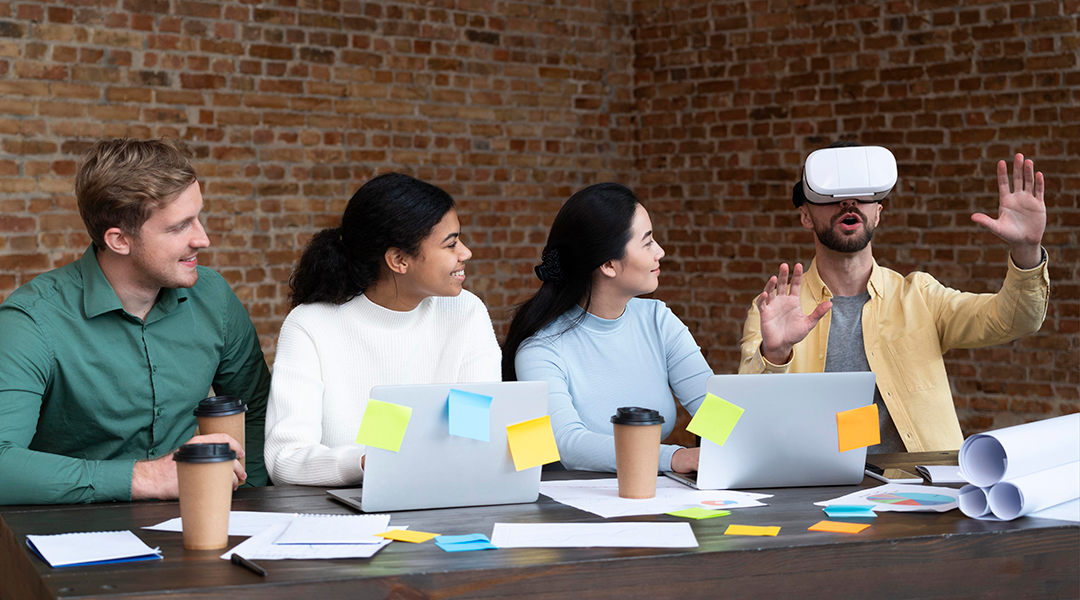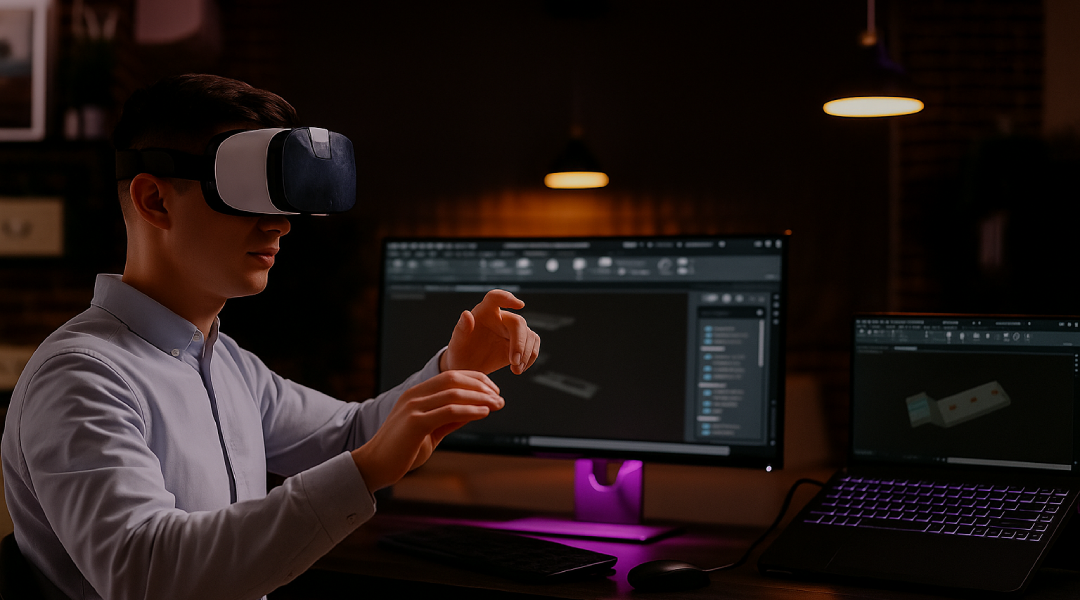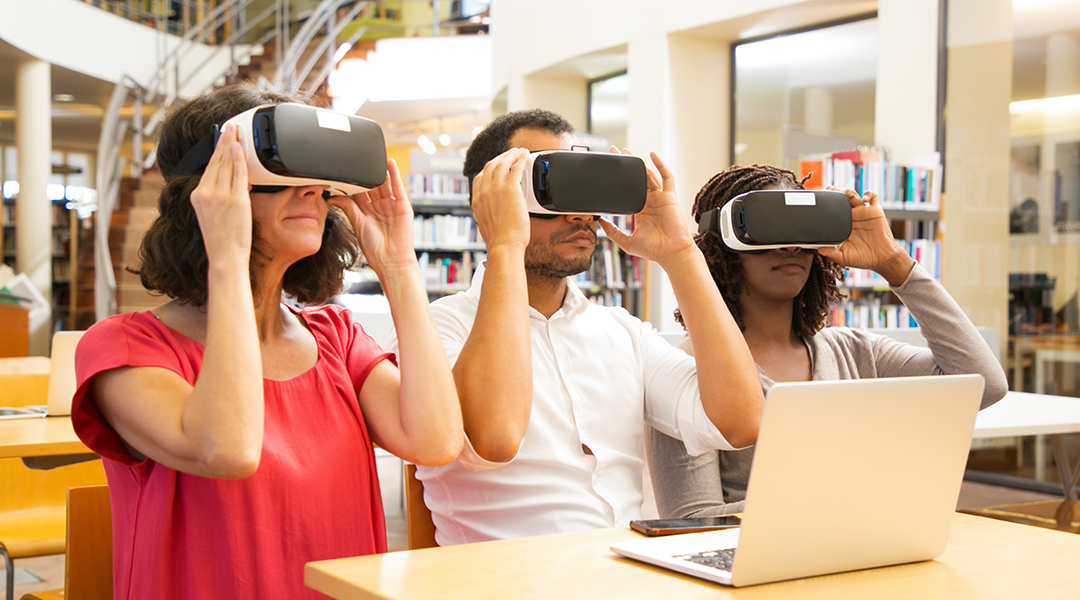Virtual reality is a technology that appeared in our lives not so long ago. However, in just a few years, it advanced the development of many vital aspects of human life, such as education and medicine. For example, VR in education helps to improve students’ academic performance, practice in a safe virtual space, and even train teachers. But how exactly does it work?
In this article, we’ll share the basics of how the use of virtual reality for educational purposes benefits everyone in the field of education. Furthermore, we’ll examine some real cases of the use of VR in education and help you choose a VR app development company if you need a custom solution.
What is VR in Education?
Most people have an idea of how virtual reality works. The user is immersed in a computer-created world with the help of special equipment and applications that are installed on it. But what is virtual reality in education? Learning apps immerse students in a dedicated virtual environment for exploring various subject matter.
How does it work
Many educational institutions use virtual reality in eLearning as well as for in-person education. That’s because it’s quite accessible and doesn’t require lengthy textbooks to impart information. Virtual reality in online education uses two main factors that make this experience meaningful and effective: hardware and software.
Hardware
Full immersion in the virtual world is possible only when all can be seen and interacted with a virtual environment. VR headsets have been created for these goals and contain special components for different aspects of immersion. Virtual reality glasses obscure the user's real surroundings and show only the artificially created 3D environment. In parallel, built-in speakers transmit the audio from the virtual world. Additionally, hand controllers translate user movements and actions into a virtual environment.
Software
In order to immerse yourself in a virtual world, it needs to be created first. Developers package all the details, environment, and functionality of the virtual world in an application that helps users perform specific tasks. For example, during a biology class, students can explore the structure of different organisms in 3D, listening to audio information simultaneously. You can purchase ready-made applications that are in the public domain, or create custom software with any necessary features.

How Can VR Help Education?
Virtual reality can do a lot in education and training, as polls and practice show. To illustrate, let’s consider the benefits of virtual reality in a classroom.
According to the Gallup survey, “...nearly nine in 10 students (89%) say they use digital learning tools to learn at school at least a few days a week, and about seven in 10 (71%) say they use them that often outside of school to get schoolwork done.”
Thus, virtual reality is a great fit in many classrooms that are already tech-friendly.
Using VR in education is also praised for creating a complete learning experience while using fewer resources. For a closer look, let’s go over the benefits of virtual reality in education.
Reducing teacher workload
The work of a teacher requires a lot of effort in order to convey information to students effectively, preparing materials, building a lesson structure, and preparing clear examples that everyone can understand.
A virtual reality application solves each of these problems, since curricula and lessons are transferred to digital format. In addition, interactive presentations and examples are embedded in the application that engages students in the learning process. As a result, the software reduces much of a teacher’s workload.
Improving academic performance
Of many teaching methods, each has a different effect on the student's progress and the assimilation of information. The famous concept called the Learning Pyramid, created by the National Training Laboratories Institute back in the 1960s, concludes that listening to lectures and reading methods contribute to sticking the material by only 5 and 10 percent, respectively.
On the other hand, the pyramid shows that using a simulation method to deliver a lesson helps students remember 90% of what they did. The figures are pretty impressive! Considering that VR technology works on the same principle, this method can also improve students’ academic performance.
Providing new learning tools
Many schools and colleges cannot regularly update teaching materials to provide only up-to-date information in a modern way. This is where a significant advantage of VR-based eLearning comes into play. Learning apps can periodically update information with minimal effort from teachers and students.
Providing opportunities for practice
Traditional teaching methods rarely provide students with interactive practice, especially when they do not need to leave the classroom or home. With the help of virtual reality applications, students can immerse themselves in any environment and practice in any subject, from interactively solving an equation to dissecting frogs.
Making complex topics simpler
Lots of different phenomena, processes, etc., are too complex to explain to students in a way that everyone can understand properly. For example, it’s hard to imagine how exactly the human body works. However, visualization serves as an effective way to impart any information to students' minds so they can figure it out and remember it.
How VR is Used in Education
Many organizations have already experienced the use of VR in education and made up their own opinion about it. You can explore some interesting VR in education examples in order to find out more about how this technology can be used in the real world.
Teaching with virtual reality
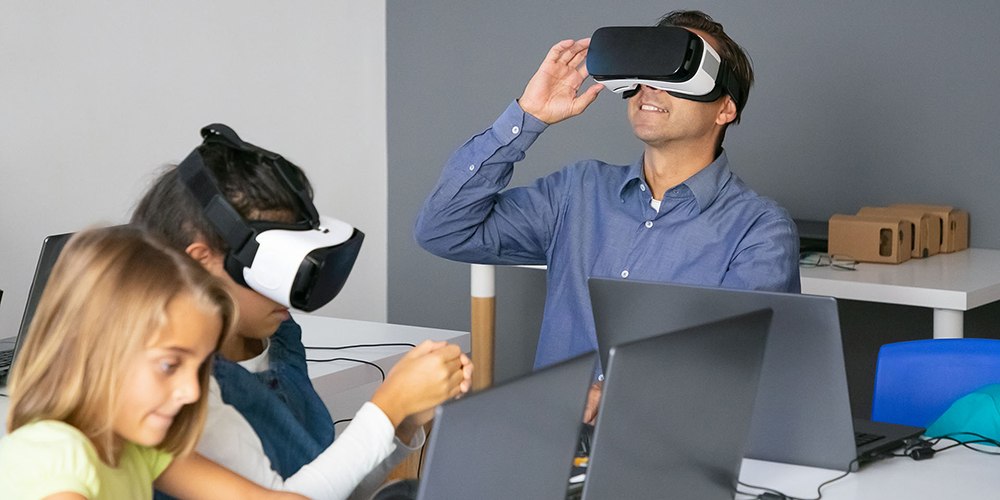
It may be hard to imagine how VR can be used to train teachers, but Paul Driver from Cambridge discovered this field. The study author and educator shared that a good way for a teacher to become better is to film their own lessons. Unfortunately, standard filming could not convey the entire atmosphere of the class, and the students' heads only obscured the view.
So Paul tried to film his lesson on a 360-degree camera in order to view the video through the VR headset afterward. Thus, he could evaluate his skills as a teacher from the outside and highlight the points that he should improve.
Virtual reality online learning for students
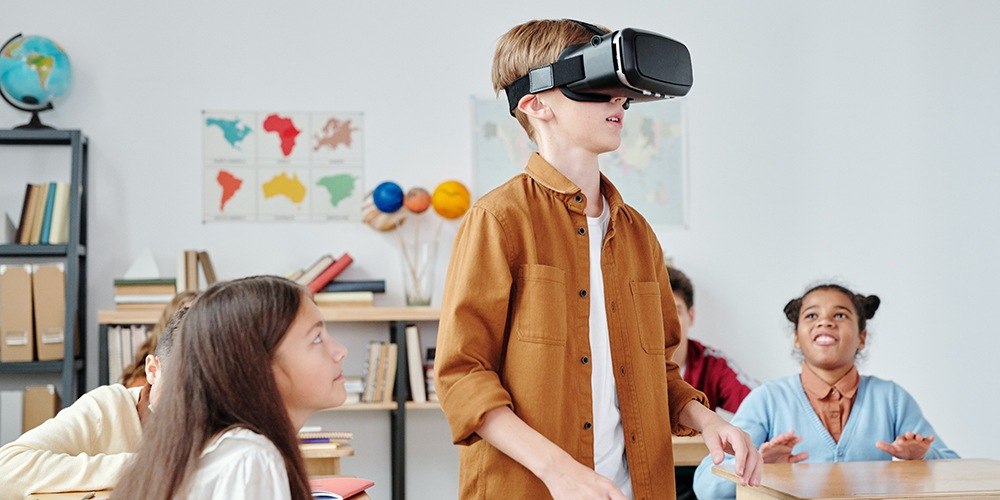
-
In schools. A startup from Scottish Highlands created an immersive app for student learning that combines AI (artificial intelligence) and gamification. A company believes that virtual reality in school education can increase the level of learners’ engagement and academic performance. Besides, this app was made to use with Google Cardboard — the most affordable gadget that simulates VR glasses with a smartphone.
-
In higher education. Teachers of University Park, Pennsylvania showed an example of how to use VR in the classroom of remote format — teachers of two geology courses organized a virtual tour to explore different types of earth and minerals. Previously, such excursions were carried out in real life, but could not always proceed due to weather conditions. Since virtual reality does not depend on the weather, such tours are easy to conduct at any time of the year.
-
Students with special needs. Charlton Park Academy, based in the UK, is where children with special educational needs are studied. Teachers of this institution shared their experience of how virtual reality can help students educate and develop considering some physical limitations. For example, teachers provide students with new experiences that are impossible for them in real life, such as tours on Mars, the Ocean, or seeing the pyramids.
VR training
Virtual reality training is widely used not only for education in schools and colleges but also for professional learning. For example, the Program-Ace company developed an effective app of virtual reality in education and training for an aircraft company.
Aircraft Engine VR Training - Explore Our Portfolio Project
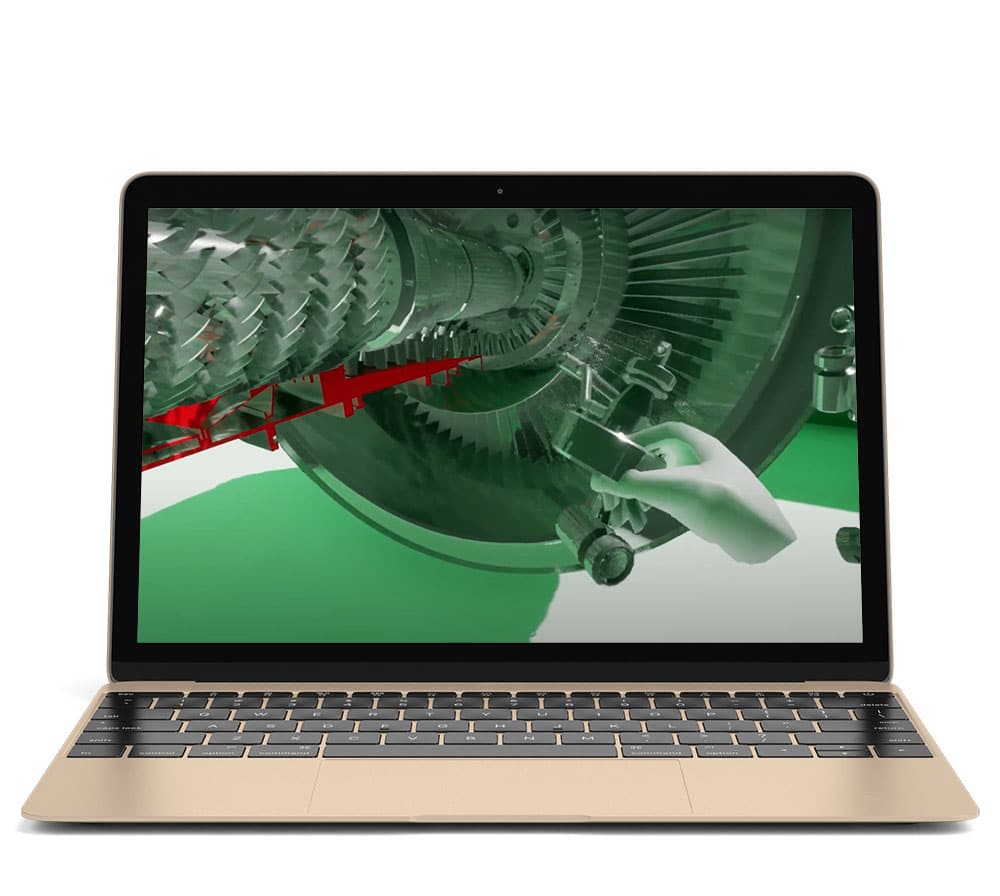
Using lots of professional software like CAD, 3Ds Max, and UE4, we created an application for Aircraft Engine VR training that allows users to practice assembly of heavy engines with no physical risk. This training method reduced the average learning time while increasing specialists’ qualifications and performance.
Building a Custom App for VR Educational Needs
As you can see, virtual reality in teaching and learning can be very helpful at any educational stage — from elementary school to professional skills training. Building custom applications guarantees that the information and skills are delivered in a way that fully adheres to business goals and company policy. So if you need such an app, it’s always better to entrust its development to professionals.
Choosing Program-Ace is a reliable way to get a versatile app in an optimal timeframe with no worries about the result. We are an experienced team of professionals that have pushed projects to success for almost 30 years. So our company has enough resources and expertise to develop a top-notch product that will benefit any business or institution.
Ready to discuss the future of your app? Contact us anytime and get a detailed consultation!
